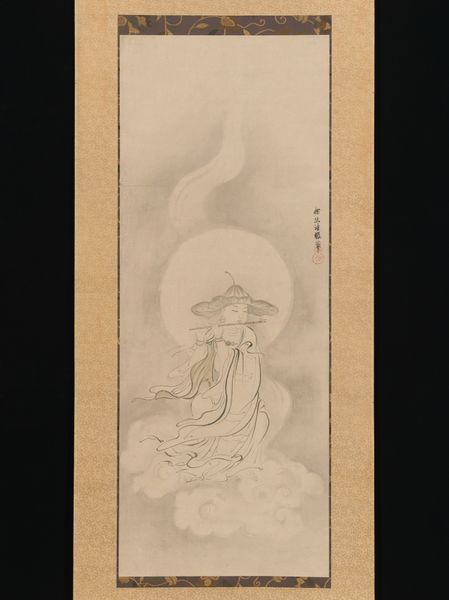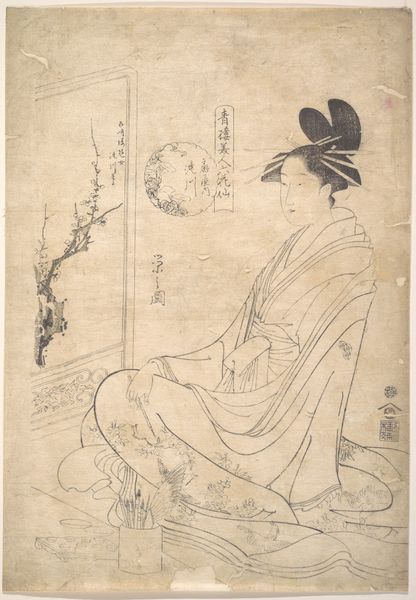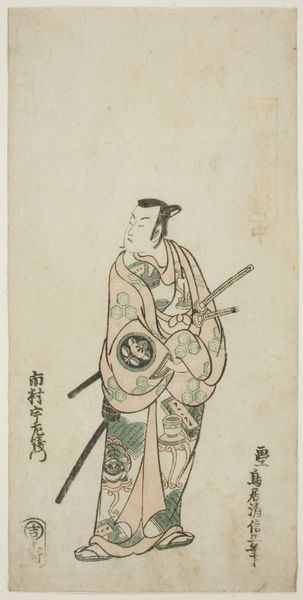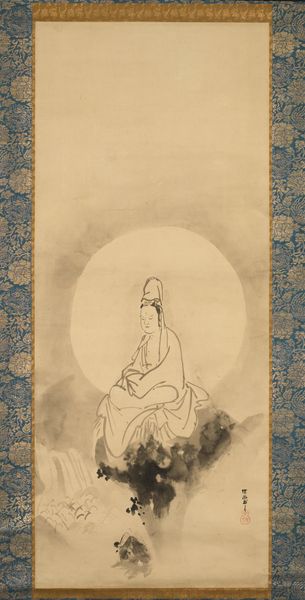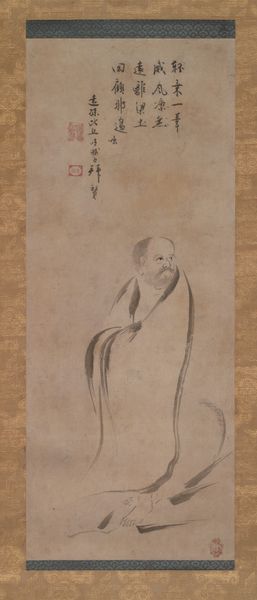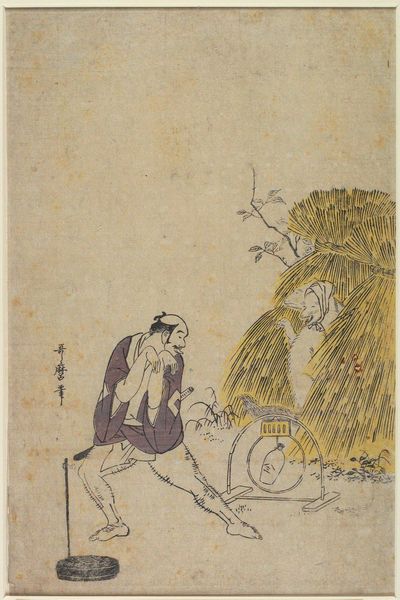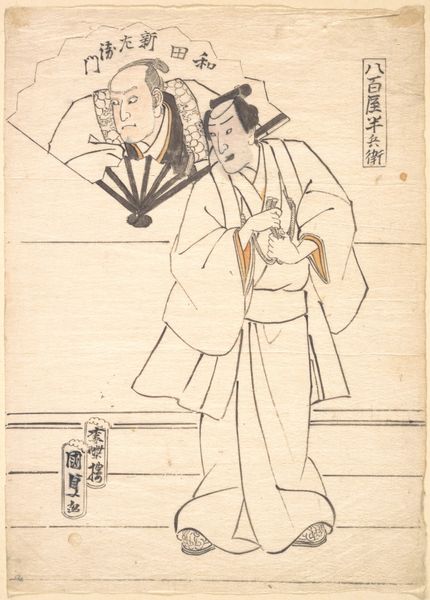![White-Robed Kannon [center of a triptych of White-Robed Kannon and Cranes] by Kano Tan'yū](/_next/image?url=https%3A%2F%2Fd2w8kbdekdi1gv.cloudfront.net%2FeyJidWNrZXQiOiAiYXJ0ZXJhLWltYWdlcy1idWNrZXQiLCAia2V5IjogImFydHdvcmtzL2FiN2QwMDIzLWE0MDUtNGM1Mi05ZjI5LTg2ZjVjMmVhMjEwOC9hYjdkMDAyMy1hNDA1LTRjNTItOWYyOS04NmY1YzJlYTIxMDhfZnVsbC5qcGciLCAiZWRpdHMiOiB7InJlc2l6ZSI6IHsid2lkdGgiOiAxOTIwLCAiaGVpZ2h0IjogMTkyMCwgImZpdCI6ICJpbnNpZGUifX19&w=3840&q=75)
White-Robed Kannon [center of a triptych of White-Robed Kannon and Cranes] 1664
0:00
0:00
paper, ink-on-paper, ink
#
asian-art
#
landscape
#
japan
#
figuration
#
paper
#
ink-on-paper
#
ink
#
yamato-e
Dimensions: 44 5/16 × 16 1/4 in. (112.55 × 41.28 cm) (image)76 3/4 × 20 1/2 in. (194.95 × 52.07 cm) (mount, without roller)
Copyright: Public Domain
Editor: Here we have Kano Tan'yu's "White-Robed Kannon," from 1664, crafted with ink on paper. The monochrome and wash lend it such a serene, almost ethereal feel. The flowing lines describing the waterfall behind the figure contrast well with the solid mass of the boulder on which she sits. What strikes you about it? Curator: Indeed. Let us begin by observing the use of ink wash. Note how the varying densities create a sense of depth and volume. The Kannon's robe, rendered in delicate, almost transparent washes, contrasts with the more forceful, abrupt strokes defining the rock. The dynamism is carefully controlled; note the interplay between line and form. How do these elements influence our perception of space within the picture plane? Editor: I see what you mean, how the lighter washes create distance. It's subtle, but it pushes the waterfall back and pulls Kannon forward. Curator: Precisely. Moreover, examine the compositional structure. The waterfall descending from above meets Kannon centrally, visually stabilizing the overall verticality of the format. Observe the negative space that accentuates and intensifies the figure, inviting a meditation on the nature of transcendence and the pictorial means that affect perception. Editor: That’s insightful. I hadn't noticed how carefully the composition directs my eye. Thank you for guiding me through this. Curator: My pleasure. This close observation reminds us of the power of formal elements in conveying meaning. I was very keen to explore your interpretation!
Comments
minneapolisinstituteofart almost 2 years ago
⋮
Avalokiteshvara, known in Japanese as Kannon, is one of the most popular deities in Zen Buddhism. From the 1300s through the 1500s, Zen painters in Japan frequently created monochrome ink paintings of Kannon relaxing in nature. Nearly 200 years later, a professional painter, Kano Tan’yū, borrowed from this long tradition for this triptych, showing the deity in the center resting on a boulder beneath a waterfall and gazing down at the waves below. As is common with devotional triptychs, the central deity is flanked by complementary images of birds, in this case cranes with bamboo and a pine tree.
Join the conversation
Join millions of artists and users on Artera today and experience the ultimate creative platform.
